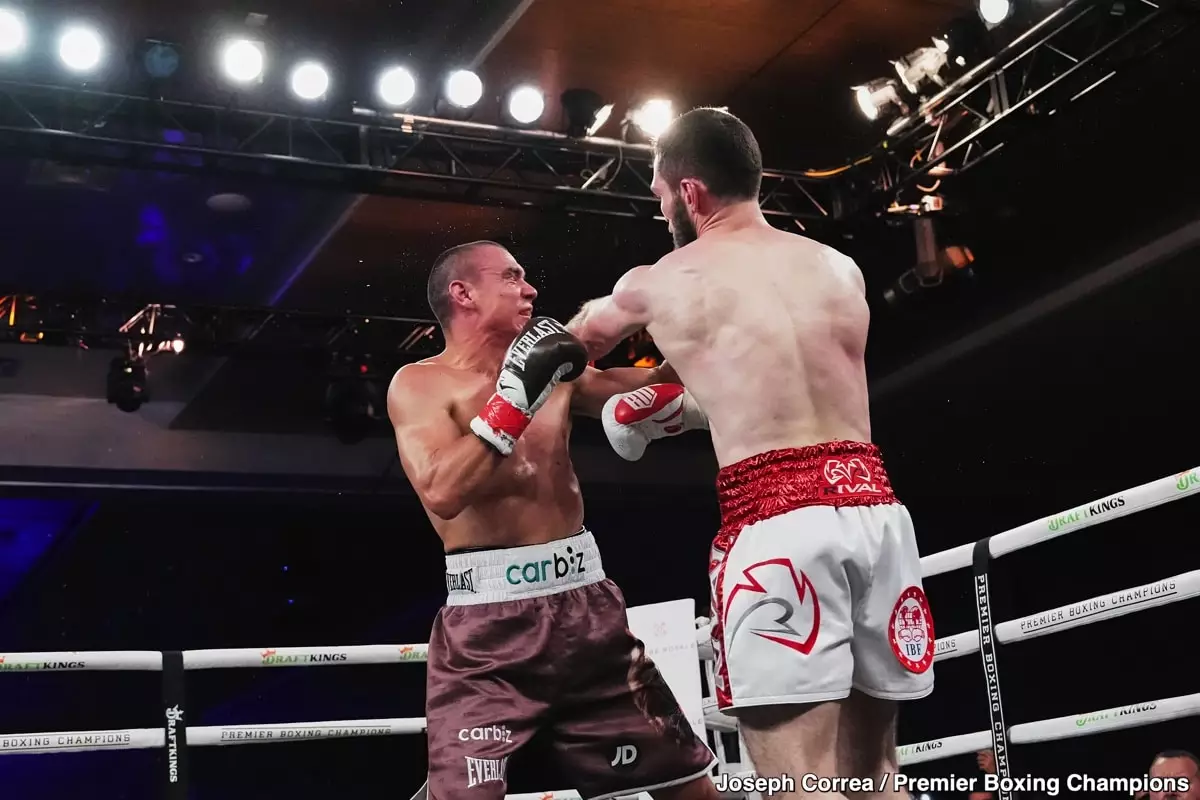In the world of boxing, opinions on fighters can lead to heated discussions, and few topics ignite more debate than the potential matchups between champions. Recently, Steven Nelson, Terence Crawford’s teammate, weighed in on the rising star Bakhram Murtazaliev and Crawford’s performance against Israil Madrimov. His analysis not only sheds light on their fighting styles but also raises intriguing questions about Crawford’s legacy and his positioning within the sport.
Nelson’s critique of Murtazaliev is straightforward—he views the IBF junior middleweight champion as possessing a “basic style” that lacks the complexities presented by some of Crawford’s past opponents. Murtazaliev, who boasts an impressive record of 23 wins with 17 knockouts, is described by Nelson as merely a “tough” fighter. This characterization is telling; it suggests that Nelson believes Murtazaliev’s approach relies predominantly on durability rather than strategy or adaptability. Moreover, Nelson explicitly rates Madrimov higher than Murtazaliev, indicating a belief that the former showcased a more nuanced and unpredictable boxing style that challenges conventional defensive strategies.
Nelson’s assessment reveals a window into the contrasting designs of fighting tactics between these athletes. While Murtazaliev may overwhelm opponents with raw strength, Madrimov’s arsenal, characterized by feints and targeted strikes, creates a multidimensional challenge, as was evident during Crawford’s recent bout against him. In an era where adaptability is key for champions, the limits of Murtazaliev’s technique may render him less formidable in the eyes of his critics.
The bout between Crawford and Madrimov serves as a critical touchstone for evaluating Crawford’s current standing in the 154-pound division. Despite Crawford’s victory—albeit a contentious one—over the 11-fight pro, doubts persist about his ability to maintain his elite status. Nelson points out that Crawford’s “herky-jerky” struggles against Madrimov underscore a vulnerability that even the champions must address. Given that Crawford barely managed to clinch a unanimous decision victory, one could argue that this was less of a testament to his dominance and more a revelation of his challenges against fighters who present unique styles.
It’s worth noting that Crawford, at 37, has visibly aged since his matchup with Errol Spence earlier in 2023. His power seems to have not transitioned effectively from welterweight to junior middleweight, making the prospect of facing a different adversary like Murtazaliev potentially daunting. Despite Nelson’s deep respect for Crawford’s competitive spirit and prowess, the implications of these recent performances suggest that his run at legacy-defining moments may be a rocky one.
Nelson makes a compelling observation regarding the motivation behind Crawford’s future matches. He implies that Crawford’s primary concern lies not in immediate fan approval but rather in crafting a lasting legacy that will see him remembered as a Hall of Famer. This reflects an oft-overlooked aspect of twinned ambition in boxing: the balance between public expectations and personal aspirations. While fans may clamor for thrilling matchups, the intricate politics of legacy can lead fighters to eschew certain bouts that don’t align with their long-term goals.
Additionally, Crawford’s reluctance to directly engage Murtazaliev raises questions about his self-confidence at this midpoint in his career. Offers to unify titles among champions often come with immense pressure, and the prospect of facing Murtazaliev could unintentionally hang over Crawford’s head as a shadow of doubt. To fans and boxing enthusiasts alike, this hesitation might signal an underlying fragility in Crawford’s once-invincible persona.
As Crawford traverses the twilight of his career, the challenge remains in making choices that not only satisfy his ambition but also intrigue the boxing community. Choices that seem strategically sound today could loom large in discussions of “what if?” years down the line. Nelson’s insights capture this ongoing tension, stressing that fans are often left pondering whether Crawford’s decisions are driven by fear, caution, or a calculated understanding of his capabilities against formidable opponents like Murtazaliev.
Terence Crawford stands at a pivotal juncture, shaded by the judgements of teammates and analysts alike. As he navigates the complicated landscape of boxing, the dialogue fostered by Steven Nelson forces fans to engage in deeper discussions about legacy, style, and the intangible elements that define success in the ring. Only time will tell how these narratives will shape Crawford’s story, but one thing is clear: the boxing world is watching intensely.


Leave a Reply